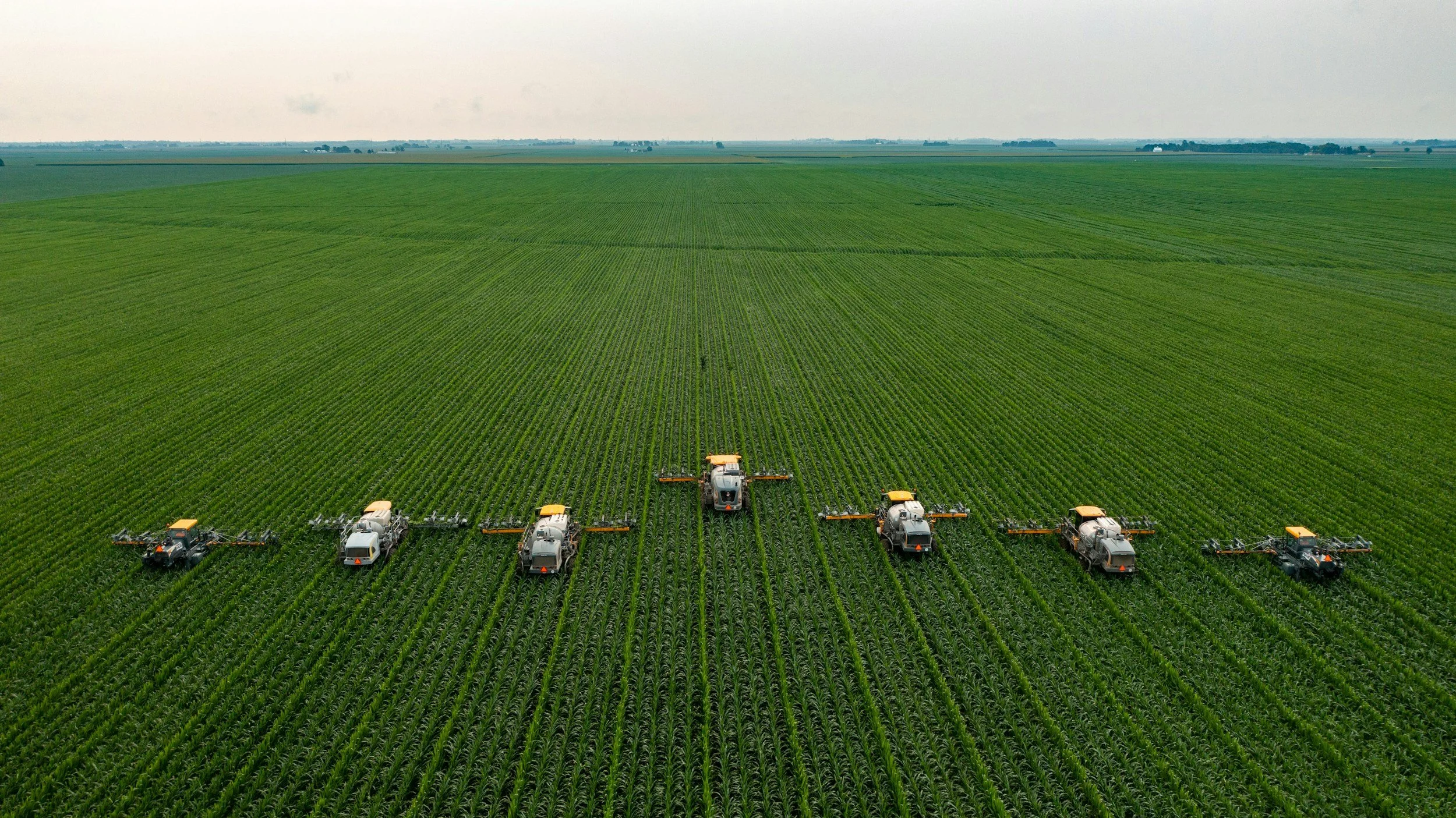Preparing Your Garden for Fall: Tips for a Smooth Transition
/As the seasons change and fall approaches, it's time to prepare your garden for the colder months ahead. The changing of the seasons brings a unique set of challenges and opportunities for gardeners. Transitioning from summer to fall might seem daunting, but it’s the perfect time to ensure your garden remains healthy and productive. Whether you're putting your plants to bed, readying the soil for the next growing cycle, or strategizing for productive winter planting, each step lays the groundwork for a thriving garden come spring.
This article discusses some strategies for ensuring a smooth transition into the fall and winter seasons, whether you want to keep your garden growing or prepare it for next year.
Putting the Yard and Garden to Bed
As the days grow shorter and temperatures drop, it's time to prepare your garden for winter. Putting your yard and garden to bed involves a few key steps that ensure everything is ready to withstand the colder months.
Clean Up Debris
Start by clearing away any dead plants, fallen leaves, and other debris from your garden beds. This helps prevent pests and diseases from overwintering in your garden. Be sure to remove any weeds as well; they can compete with your plants for nutrients and water even in the colder months. You should also remove any diseased and dying plants from your beds. If you plan to grow crops during the fall and/or winter season, it's fine to leave some plants in place if the're not quite finished their life cycle. As soon as they're finished, pull them out by the roots; perennials can be cut down to the ground.
Winterize Irrigation Systems
Winterizing your irrigation system is essential to prevent damage from freezing temperatures and ensure its longevity. Start by draining all the water from the system to avoid ice formation that can burst pipes and valves. Turn off the water supply to the irrigation system, then open all the drain valves and disconnect the hoses. For systems that have automatic timers, make sure to remove and store them in a frost-free environment. If you have a sprinkler system, consider using an air compressor to blow out any remaining water from the lines. Lastly, cover any exposed components with insulation or protective coverings to shield them from harsh winter conditions.
Properly winterizing your irrigation system will not only safeguard your investment but also ensure a seamless start to the next growing season.
Control Perennial Weeds
Controlling perennial weeds in your fall garden requires a strategic approach to ensure they do not overrun your plants and disrupt your garden’s health. One effective method is to physically remove the weeds by pulling them out by the roots, ideally after a rain when the soil is moist and loose.
Additionally, applying a thick layer of mulch can smother these persistent weeds and prevent sunlight from reaching their seeds. Additionally, solarization, which involves covering garden areas with clear plastic to trap heat and kill weeds and their seeds, can be a powerful long-term solution. Finally, employing a combination of these methods, along with regular monitoring and maintenance, will help you keep your fall garden thriving and free from invasive perennial weeds. Keeping your garden well-maintained by regularly monitoring for and addressing weed growth will also help to minimize their impact and create a thriving fall garden environment.
Care for Machines and Tools
As summer comes to an end, it's essential to properly care for your gardening machines and tools to ensure they remain in good condition for the next planting season. Begin by cleaning all equipment thoroughly to remove dirt, debris, and any plant residues, which can lead to corrosion and rust if left unchecked.
Inspect blades for sharpness, making sure to sharpen them as needed, and apply a rust-preventative oil to metal parts to inhibit rust formation. Drain fuel from gas-powered tools to prevent engine issues, and store them in a dry, cool place to avoid exposure to moisture. Finally, take the time to check and replace any worn parts, and organize your tools neatly to ensure they're easily accessible and ready for use when spring arrives.
Proper maintenance at the end of summer can extend the life of your gardening equipment and prepare you for a successful gardening season ahead.
Prepare Your Soil for Next Year's Garden
Preparing your soil is essential to creating an ideal environment for your plants to thrive. It’s not just a task to check off your gardening to-do list; it’s an art and a science that requires attention to detail and a little patience. From testing pH levels to adding organic matter, every step contributes to a healthy, nutrient-rich foundation. So as you cozy up during the colder months, take a moment to consider these crucial steps for prepping your soil, ensuring that your garden will burst with life come next spring.
Test the Soil
Testing your soil for the next season is a crucial step in ensuring a successful and fruitful growing period. By analyzing the nutrient content, pH level, and overall health of your soil, you can identify any deficiencies or imbalances that may hinder plant growth. This proactive approach allows you to make informed decisions about what amendments or fertilizers to apply, ensuring that your plants receive the optimal conditions to thrive. Additionally, soil testing helps to prevent over-fertilization, which can not only waste resources but also lead to environmental issues. By investing time in testing your soil now, you set the stage for a productive and sustainable garden next season.
A simple home-based testing system from your local home improvement store of nursery can give you a basic idea of what your soil lacks or has in abundance. Sending soil samples out to your local agricultural extension will give you more detailed and accurate results, but you should be prepared to pay anywhere from $10 to $200.
Based on the results, you can add organic matter such as compost, well-rotted manure, leaf mold, or specific nutrients to improve soil structure and fertility.
Plant Cover Crops
If you’re not planting anything in your garden until spring, consider using cover crops. These plants help protect and improve soil health. Common cover crops include peas, oats, hairy vetch, clover, and sorghum.
These are part of the four main types of cover crops: grasses, legumes, brassicas and non-legumes. Grasses like ryegrass replenish nutrients. Legumes such as alfalfa add nitrogen to the soil. Brassicas like radishes can break up compacted soil. Non-legumes, like flax, also provide benefits. Just be sure to check if any cover crops are toxic to pets before planting.
Cover crops can also work as mulch to suppress weeds. For the best results, plant them before winter arrives. This way, they will boost nutrients and help keep weeds at bay.
Gardening in Winter
Depending on your growing zone, you may be able to grow your own produce all year long; in areas that are semi-tropical or tropical, you may even be able to do this without having to invest in season extender tools like a greenhouse, frost cover, or cold frame. A few places (USDA zones 0-2) have extremely short growing seasons that make it very difficult to grow vegetables outdoors without using specialized techniques and growing plants that are uniquely adapted to that climate. However most people, even those who live in places where it reliably snows every winter (like Ontario, Canada), can continue to grow fresh herbs, vegetables, and even some flowers all year round.
A few methods will ensure that you continue to harvest at least a few things well into the cold season.
Warm up the soil
During the colder months, there are several methods to warm up the soil for planting. One option is to cover the ground with black plastic, which can increase the temperature by approximately 3⁰ C/ 37⁰ F. If you add a layer of 10cm/4 in. mulch on top of the plastic, you can warm the soil up by an additional 3⁰ C/ 37⁰ F. Clear plastic or garden fleece can also be used to achieve the same effect. Growing in a raised garden bed or a black container can increase soil temperatures by up to 5°C/41°F.
Row Covers and Frost Covers
Row covers provide an effective way to protect your plants from cold temperatures and frost while also promoting warmth. These lightweight covers trap heat and create a microclimate around your plants, allowing them to thrive even in chilly conditions. It's important to ensure that the row covers are not in direct contact with the foliage to prevent damage; use hoops or stakes to keep them elevated.
Frost covers are an essential tool for protecting your garden during the coldest months and unexpected frosts. By placing these covers over your plants, you create a barrier that traps heat and insulates them from frigid temperatures. To effectively use frost covers, ensure that they are made from breathable materials to allow air and moisture to circulate while still providing warmth. It’s best to put the covers in place before frost is expected, ideally securing them gently so they don’t damage your plants. In the morning, remove the covers to prevent overheating as the sun rises, and store them in a dry place until needed again. Regular monitoring of weather forecasts can help you decide when and how to use frost covers, ensuring your garden remains healthy and thriving despite temperature fluctuations.
Mini Hoop Houses
Mini hoop houses are compact, freestanding structures that provide a controlled environment for growing plants. Typically made from flexible plastic or fabric stretched over a series of hoops, these mini greenhouses are designed to capture sunlight and retain heat, extending the growing season for gardeners in cooler climates. They offer an affordable and accessible solution for hobbyists and urban gardeners, allowing them to cultivate vegetables, herbs, and flowers while protecting delicate seedlings from harsh weather conditions, pests, and insects. Mini hoop houses are easy to assemble and can be placed in various outdoor spaces, making them a popular choice for those looking to maximize their gardening potential.
A Smooth Seasonal Transition
As the vibrant hues of autumn begin to fade, preparing your garden for a smooth transition into the fall and winter months is essential for maintaining its health and beauty. By taking the steps described in this article, you ensure that your garden will not only survive the winter but thrive when the growing season returns.
Want to make your fall gardening easier? Try our succession planting guide. It tells you what to plant, how long until harvest, and what intervals to plant for a continuous supply of home-grown food throughout your growing season. Tailored to USDA growing zones 2-13.







































